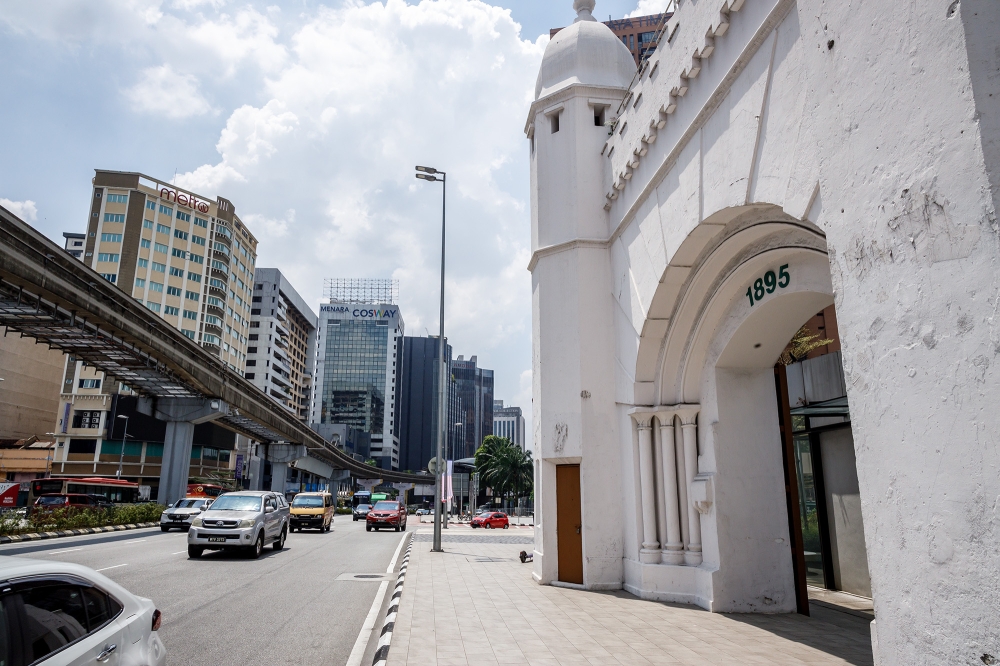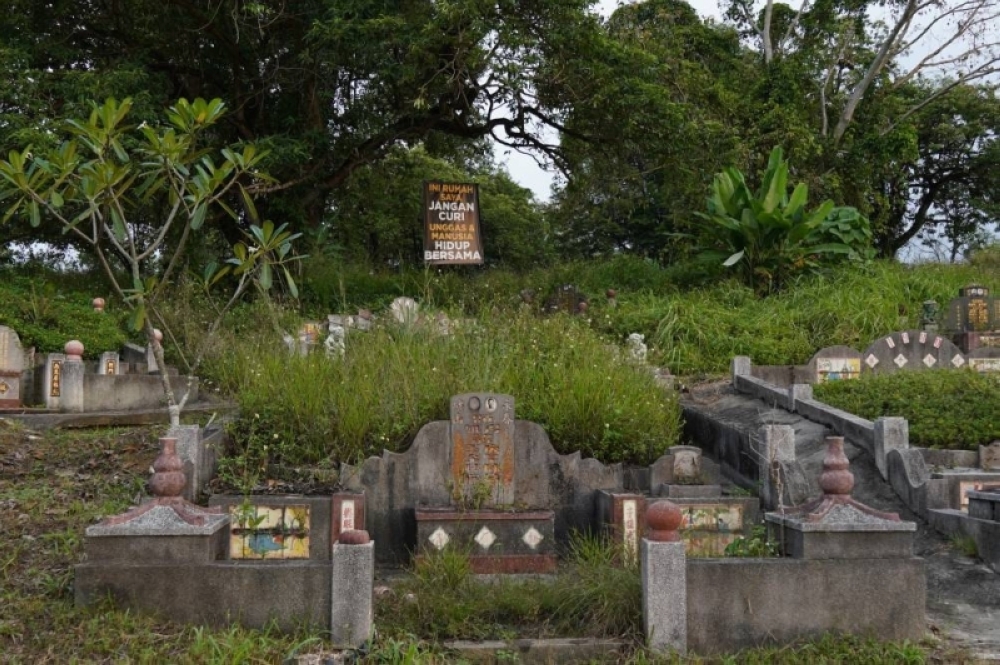KUALA LUMPUR, Aug 13 — Mention dark tourism and many may immediately think of spooky places or haunted buildings.
While that may be the first impression someone may get from the name, dark tourism isn’t about paranormal activities.
The concept, which is gaining traction worldwide, encompasses visits to places with dark histories such as sites of natural disasters, war memorials, historical cemeteries, and even locations associated with notorious crimes.
In Malaysia, there are abundant sites with dark backgrounds that offer compelling stories about the country’s struggles in the past.
Here’s a low-down of some of Malaysia’s top dark tourism spots for those seeking to gain insight into past events that left a lasting impact on the country’s history.
1. Places with a dark history
Pulau Jerejak — Penang
Pulau Jerejak is a historically rich island in Penang that has evolved from a military base and quarantine station to a modern retreat for tourists.
Its past includes roles as a British colonial military post, a quarantine centre for incoming immigrants to prevent the spread of infectious diseases and a maximum-security detention centre.
Today, the island is known for its natural beauty, offering visitors a chance to explore its historical background alongside an enjoyable retreat.
The Shih Chung Branch School — Penang
The Shih Chung Branch School is a historic institution in George Town, Penang, that went through a dark episode in its historic past.
The school was set up in 1929 to preserve Chinese cultural heritage and offer a modern, comprehensive education.
When the Japanese occupied Penang during World War II, their military captured and turned the school into their administrative headquarters.
There are stories about dark events such as torture and execution that allegedly happened during the Japanese occupation.
Sandakan Memorial Park — Sabah
The Sandakan Memorial Park preserves one of the darkest chapters of World War II in Borneo, highlighting the extreme suffering endured by Allied prisoners of war during the Sandakan Death Marches under Japanese occupation.
From January to August 1945, thousands of prisoners were forced to march from Sandakan to Ranau under brutal conditions, resulting in the deaths of nearly all involved.
Today, the Sandakan Memorial Park stands as a poignant reminder of their suffering and a place for reflection on the consequences of war.
Bidong Island — Terengganu
Bidong Island, located off the east coast as part of Terengganu, was once gazetted by the federal government as a refugee camp for Vietnamese “boat people” during the Vietnam War.
From 1978 to 1991, it served as a temporary refuge for thousands of refugees fleeing the Vietnam War, sheltering them while they awaited resettlement.
Today, the island’s natural beauty and historical significance attract tourists and offer opportunities for historical reflection.
Monsopiad Cultural Village — Sabah
If you are fascinated by the legacy of the Borneo Headhunters, Monsopiad Cultural Village in Kota Kinabalu may be the place to learn more about them.
Headhunting in the Borneo states was practised by various tribes, including Sarawak’s Iban and Sabah’s Murut and Kadazan-Dusun.
The practice was believed to bring fear to early British colonialists over a century ago.
It’s said that the indigenous habitats in the state collected an enemy warrior’s head to take home as proof of their victory, and the practice of headhunting instilled fear in outsiders for generations.

2. Abandoned buildings
Lembah Beringin — Selangor
Lembah Beringin which means Banyan Valley is literally a “ghost town” 50 minutes away from Kuala Lumpur.
Despite its proximity to Kuala Lumpur, the town is a massive graveyard of abandoned partially constructed buildings row after row.
The town was constructed in the 90s after it was rumoured that the Kuala Lumpur International Airport was going to be built around there, and some developers rushed to build houses and commercial buildings in the area.
Later, KLIA was built in Sepang district over 100km away, leaving the town with almost no selling point.
The last nail in the coffin for the town was when the country was crippled by the 1997 Asian financial crisis causing the property prices to fall.
For over two decades, the township has remained a failed project, becoming a great example of improper development built on speculations.
Highland Towers — Selangor
A catastrophic landslide in December 1993 caused one of the towers of the Highland Towers condominium complex in Ulu Klang to collapse, resulting in 48 deaths and evacuation from the remaining blocks.
Over time, the abandoned site has become notorious in Malaysia for alleged paranormal activities.
The building has ever since attracted urban explorers, thrill-seekers, and paranormal fanatics, contributing to the site’s notoriety.
Rumours of various supernatural phenomena, including sightings of ghostly figures, eerie noises, and feelings of being watched have become a part of local legend.
Crag Hotel — Penang
The Crag Hotel is a heritage hotel located on Penang Hill in Penang Island.
During its early years, the Crag Hotel was a popular destination for affluent guests seeking a peaceful escape on the island.
Its fate then had a dramatic turn during World War II, when the hotel was captured by the Japanese Army following the invasion of Malaya.
The hotel was repurposed as a military headquarters for the Japanese forces from 1941 to 1945.
It was also used as a school from 1955 until 1977 before being abandoned.
The hotel’s transformation from a luxurious retreat to a military headquarters during the Japanese occupation and now as a historical landmark reflects the complex and layered history of Penang.
Johor Baru Prison — Johor
The Johor Baru Prison is a significant historical site in the southern state, reflecting the colonial past and its evolution into a modern penal institution after independence.
Its history encompasses a wide range of functions from its early days as a colonial prison and post-colonial development.
The prison operated until 2005 before it was shut down and moved its operation to Simpang Renggam.
The building has since been vacated and abandoned.
Mimaland — Selangor
Mimaland was a pioneering theme park in Malaysia that enjoyed a period of success in the 1970s and 1980s.
In the 1990s, the park began to face financial difficulties due to several factors including increased competition.
A major trouble struck the park in 1994 when renovation work at the pool area caused a major landslide and safety became a major concern. The incident led to the closure of the theme park the same year.
The abandoned theme park is now a spot for photographers who seek to capture the eerie atmosphere of the place.
Pudu Prison — Kuala Lumpur
Pudu Prison served as a significant correctional facility in Kuala Lumpur for over a century.
The prison was established in phases between 1891 and 1895 during the British colonial period and operated until 1996.
It was a site of both historical importance and notorious events, including public executions and the incarceration of high-profile prisoners over the years.
The prison complex was largely demolished in 2012 to make way for development projects, however, the main gate and a portion of the exterior wall of the prison have been preserved and are now part of the park surrounding the Bukit Bintang City Centre and Lalaport.

3. Historical cemeteries
Kwong Tong Cemetery — Kuala Lumpur
Kwong Tong Cemetery, also known as the KL Hokkien Cemetery, is a historically and culturally significant site in Kuala Lumpur.
Dubbed one of KL’s largest and oldest cemeteries, it served as the burial ground for the Hokkien Chinese community and is a testament to the contributions of early Chinese immigrants to Malaysia.
Today, the cemetery is preserved as a heritage site and is home to a memorial to Malayan victims of the Japanese occupation during World War II.
Protestant Cemetery — Penang
The Old Protestant Cemetery in George Town is among the oldest cemeteries in the world.
Established in 1786, the cemetery is older than many well-known burial grounds such as Pere Lachaise Cemetery in Paris or Highgate Cemetery in London.
The cemetery is home to early European settlers and prominent figures from Penang’s colonial past.



















